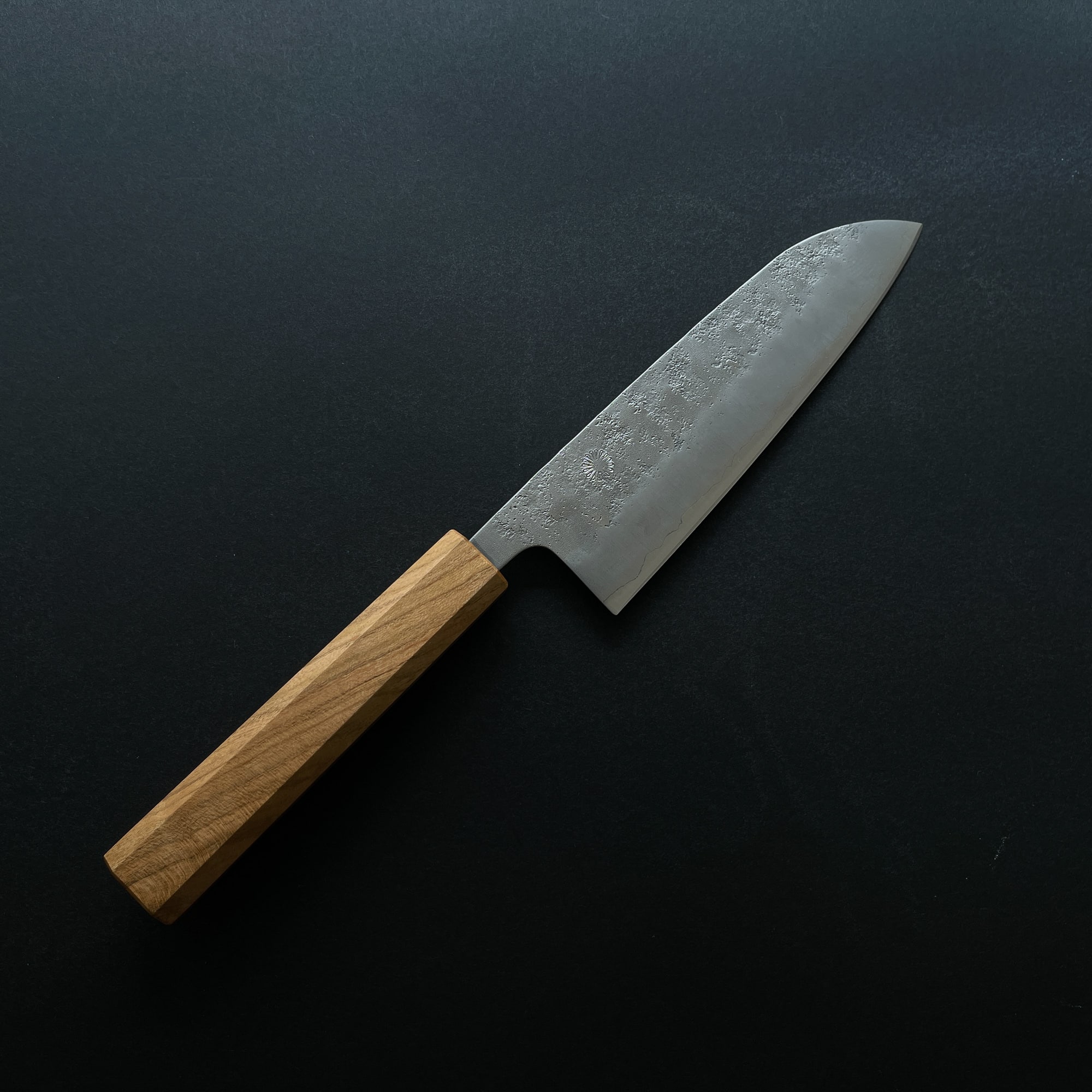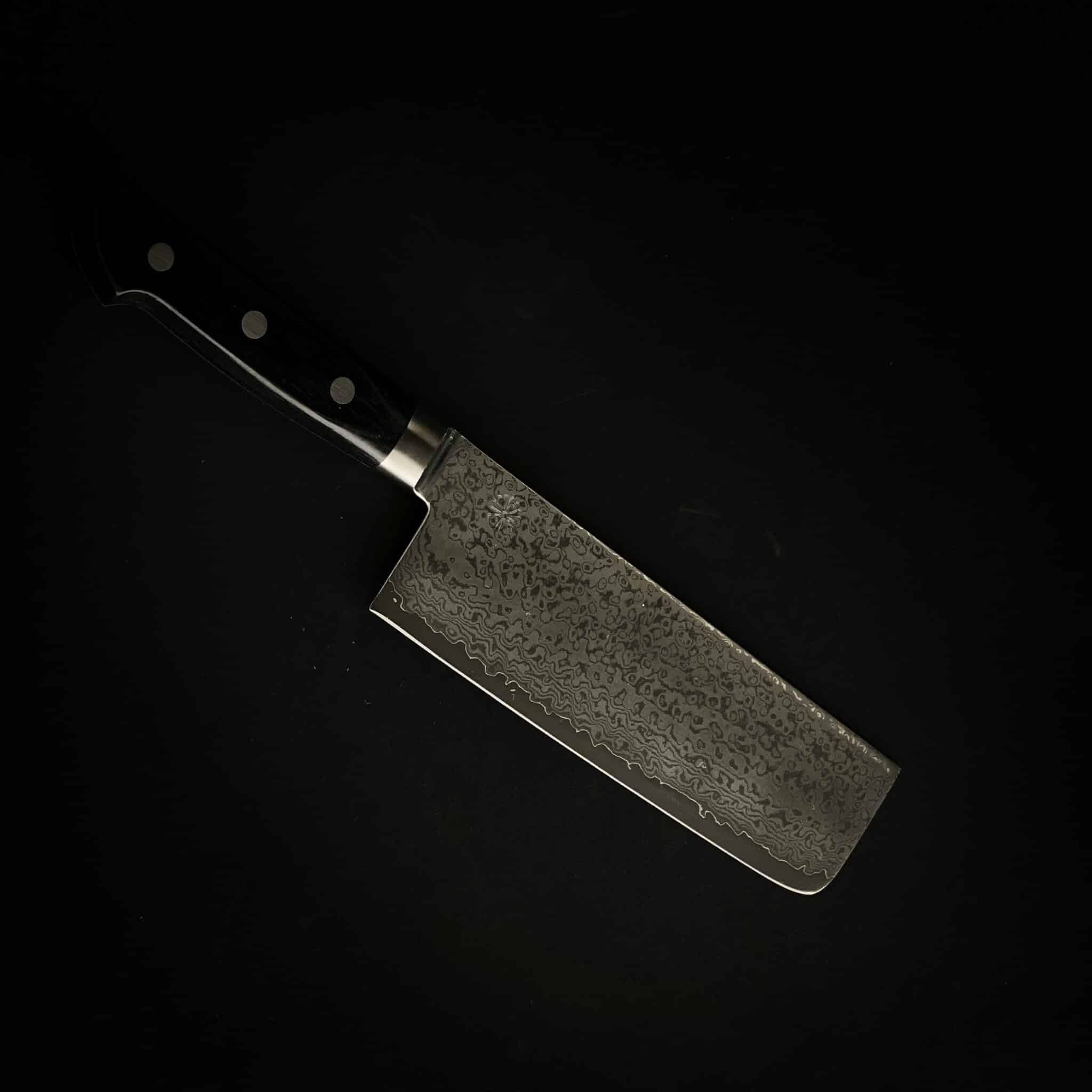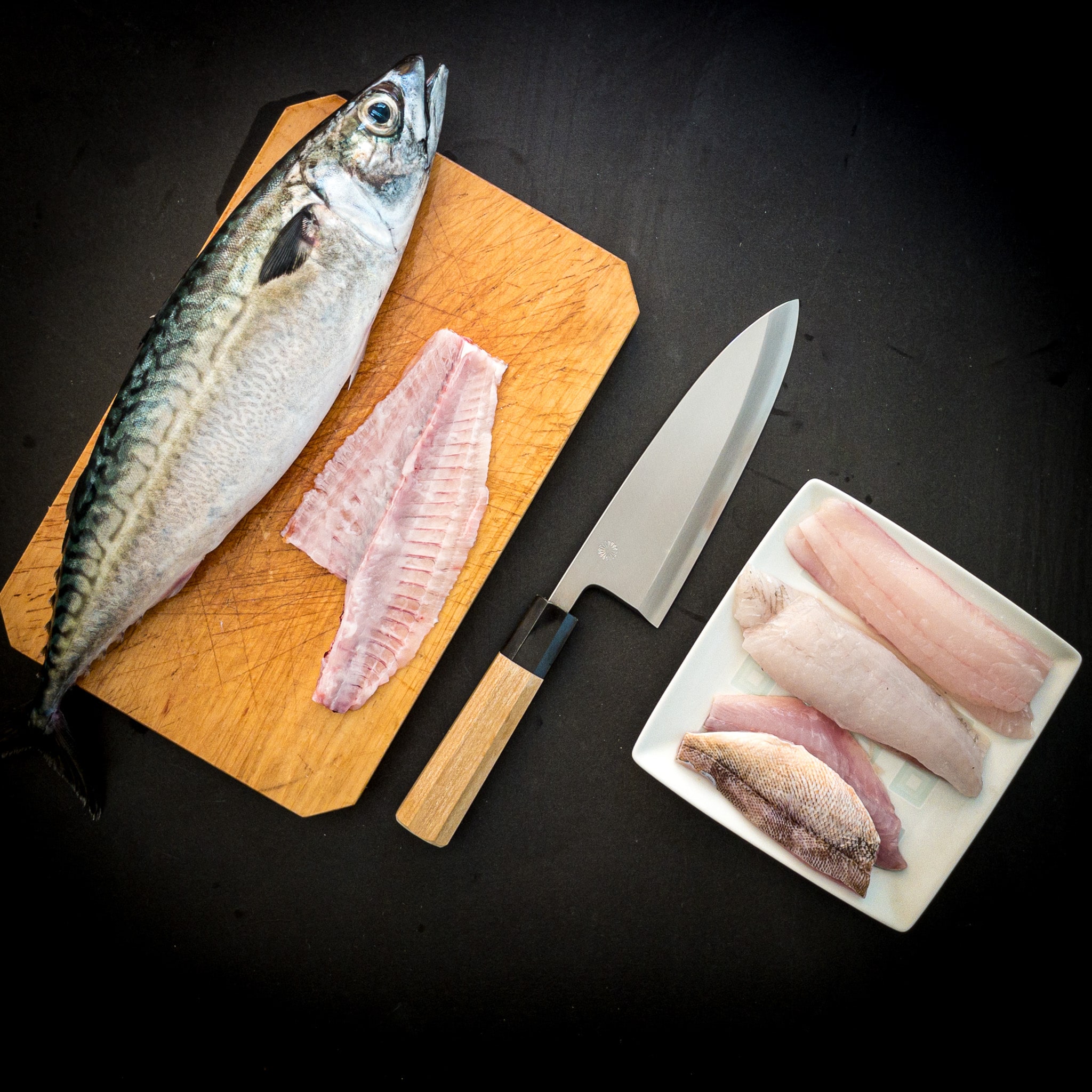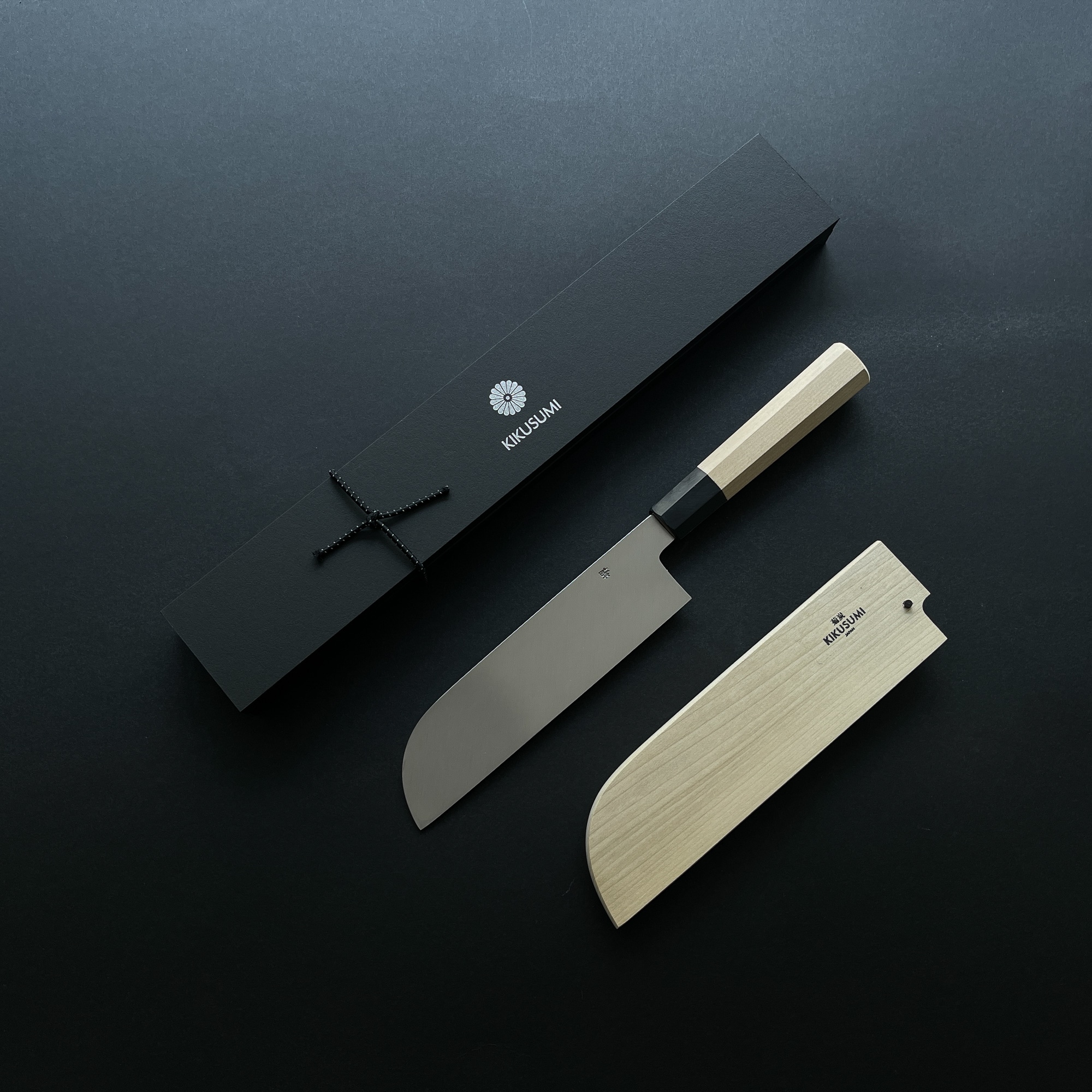THE
ART & FUNCTION
OF
JAPANESE KNIVES
Taking A Closer Look at Santoku, Gyuto, Nakiri, Yanagiba, Deba & Usuba
The Art and Function of Japanese Knives:
A Closer Look at Santoku, Gyuto, Nakiri, Yanagiba, Deba and Usuba
The Japanese culinary scene is renowned for its precision and attention to detail, characteristics that are also embodied in its beautifully crafted knives. Japan’s traditional art of knife-making is steeped in history, with each knife style having a distinct purpose and design. Today, let’s delve into the rich history and specific uses of five remarkable Japanese knives: the Santoku, Gyuto, Nakiri, Yanagiba, and Deba.
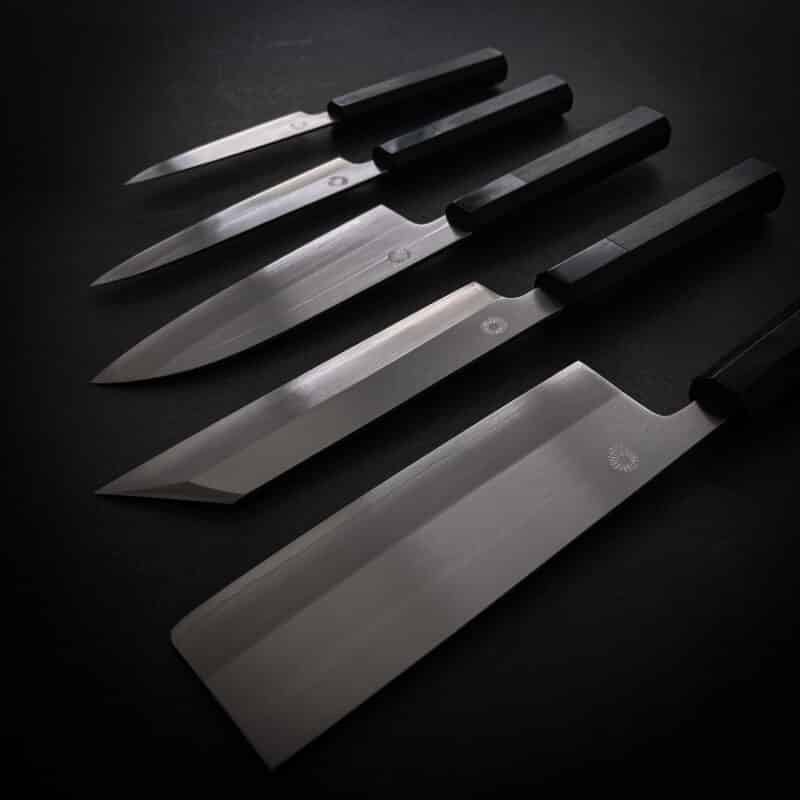
1. Santoku
The Santoku, or “three virtues” knife, is a multi-purpose tool that is commonplace in Japanese homes. Its name denotes its proficiency in handling meat, fish, and vegetables, demonstrating its versatility. This knife typically measures between 5 to 7 inches, featuring a wide blade and sheepsfoot tip that curves down at the end.
The Santoku came into prominence around the time of World War II, when a shift towards Western-style cooking required a more versatile knife. The wide blade is ideal for scooping chopped ingredients, and its thin, sharp edge ensures precise cuts.
2. Gyuto
The Gyuto, or “cow sword,” is the Japanese equivalent of the Western chef’s knife and is also a versatile kitchen tool. Ranging from 8 to 12 inches in length, the Gyuto has a slim, double-bevel blade with a curved edge that enables it to rock back and forth for fast mincing.
Born in the late 19th century, the Gyuto was designed to meet the demands of Western cuisine and excels at cutting large pieces of meat. The long blade makes it perfect for slicing roasts and carving poultry, while its sharp tip is useful for precision tasks.
3. Nakiri
The Nakiri knife, with its thin, straight-edged blade, is designed specifically for chopping vegetables. The term “Nakiri” can be translated to “leaf cutter,” emphasizing its core function.
Its origin dates back to the Edo period (17th-19th centuries), when common folk began to eat more vegetables, and a specialized tool for chopping them became a necessity. The Nakiri’s flat cutting edge allows for a full cut, ensuring that the vegetable’s skin isn’t accidentally peeled during chopping.
4. Yanagiba
The Yanagiba, or “willow leaf blade,” is a single-bevel knife that’s typically 8 to 12 inches long. Its elegant, long, and thin blade is primarily used to slice raw fish for sushi and sashimi, making it a staple in the world of Japanese cuisine.
Originating in the Kansai region of western Japan, the Yanagiba has been used for centuries by sushi chefs to perform the “hirazukuri” cut, which involves cutting a slice of fish or seafood horizontally without twisting the wrist. This method allows for a smooth, clean cut that maintains the integrity of the delicate raw fish.
5. Deba
The Deba knife is a heavy-duty tool used primarily for filleting fish. The name “Deba” means “pointed carving knife.” Its thick spine and single-bevel design give it the durability and precision needed for filleting.
Deba knives date back to the Edo period, where they were designed to handle the increasing consumption of fish in Japan’s coastal cities. The weight of the Deba makes it perfect for precision work on large, whole fish, while the sharp tip can handle smaller tasks like removing fish heads or fins. As a single bevel knife it is superior at preserving the integrity of the fish texture and taste which makes it a core knife for a sushi chef.
6. Usuba:
The Usuba, translating literally to “thin blade,” is a traditional Japanese single bevel knife that is primarily used for cutting vegetables. The Usuba knife was developed during the Edo period (17th-19th centuries), a time that also saw the emergence of the Nakiri knife. The Usuba requires a high degree of skill and experience to use effectively and is thus usually used by professional chefs for clean cuts, that preserve the texture and flavor of the ingredients.
CONCLUSION
Each of these knives, the Santoku, Gyuto, Nakiri, Yanagiba, Deba and Usuba, embody the tradition and craftsmanship of Japanese knife-making which began with sword making before transitioning to kitchen knife making in the modern era.
ARTICLE SUMMARY
1. Santoku:
A versatile “three virtues” knife ideal for handling meat, fish, and vegetables. 2. Gyuto:
The Gyuto, or “cow sword,” is the Japanese equivalent of the Western chef’s knife and is great for large slicing jobs like vegetables, meat and fruit.
3. Nakiri:
Originating from the Edo period, the Nakiri, or “leaf cutter,” is a thin, straight-edged blade designed specifically for chopping vegetables.
4. Yanagiba:
The Yanagiba, or “willow leaf blade,” is a single-bevel knife used for slicing raw fish for sushi and sashimi.
5. Deba:
The Deba is a heavy-duty knife used for filleting fish.
6. Usuba:
The Usuba is used by professional chefs for peeling and cutting vegetables.

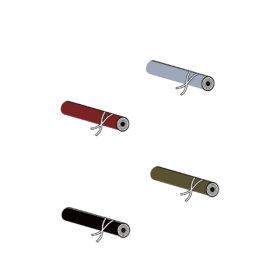 KULUR ROLL
KULUR ROLL COOKING
COOKING